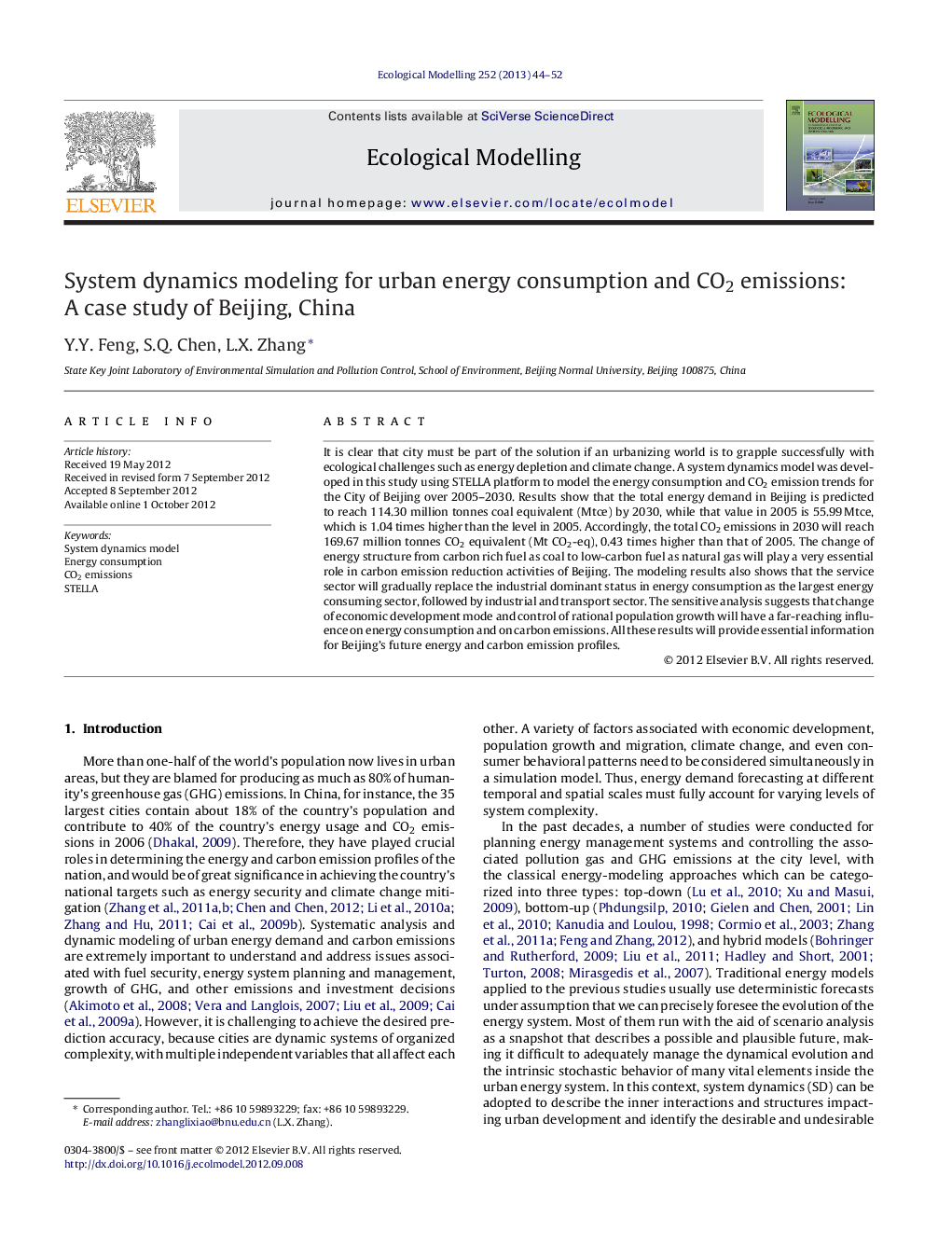| Article ID | Journal | Published Year | Pages | File Type |
|---|---|---|---|---|
| 4376187 | Ecological Modelling | 2013 | 9 Pages |
It is clear that city must be part of the solution if an urbanizing world is to grapple successfully with ecological challenges such as energy depletion and climate change. A system dynamics model was developed in this study using STELLA platform to model the energy consumption and CO2 emission trends for the City of Beijing over 2005–2030. Results show that the total energy demand in Beijing is predicted to reach 114.30 million tonnes coal equivalent (Mtce) by 2030, while that value in 2005 is 55.99 Mtce, which is 1.04 times higher than the level in 2005. Accordingly, the total CO2 emissions in 2030 will reach 169.67 million tonnes CO2 equivalent (Mt CO2-eq), 0.43 times higher than that of 2005. The change of energy structure from carbon rich fuel as coal to low-carbon fuel as natural gas will play a very essential role in carbon emission reduction activities of Beijing. The modeling results also shows that the service sector will gradually replace the industrial dominant status in energy consumption as the largest energy consuming sector, followed by industrial and transport sector. The sensitive analysis suggests that change of economic development mode and control of rational population growth will have a far-reaching influence on energy consumption and on carbon emissions. All these results will provide essential information for Beijing's future energy and carbon emission profiles.
► We focus on dynamic modeling of energy consumption and CO2 emissions in Beijing. ► The energy demand in 2030 is to be 114.30 Mtce, i.e., 2.04 times that of 2005. ► The total CO2 emissions in 2030 will reach 169.67 Mt CO2-eq. ► The service and transport sectors will become the major contributors. ► The growth of economy and population has largest effects on urban energy issues.
